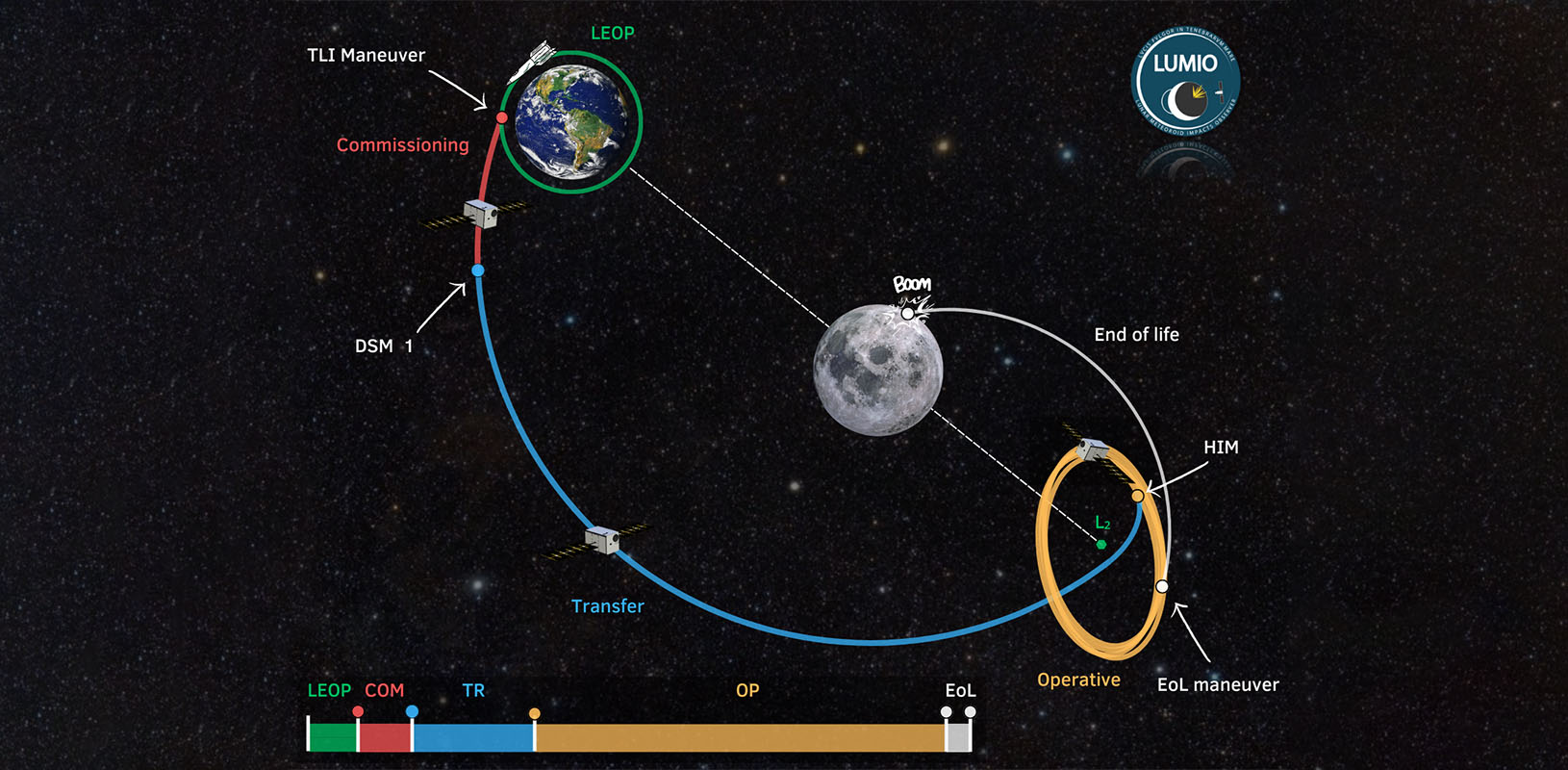POLITECNICO DI MILANO ANNOUNCES THE SUCCESS LUMIO’S PRELIMINARY DESIGN
02 November 2023 — 1 minutes read

Following a month-long review process, LUMIO’s Preliminary Design Review (or PDR) was declared successful by a panel of experts from the European Space Agency, pending a few remaining closeout actions. The PDR marks the end of Phase B, and denotes the beginning of the detailed design, which will be carried out in Phase C. As for the previous phases, the Phase B was led by the DART group at the Department of Science and Aerospace Technology of Politecnico di Milano, with the objective of consolidating the project of the mission, of the payload, and of the CubeSat.

The Lunar Meteoroid Impacts Observer (or LUMIO) is a 12U CubeSat with a mass of approximately 28 kg. After a 3-month transfer following the most efficient trajectory to reach the Moon, this miniaturized satellite will fly on a sophisticated orbit about the Lagrangian point L2 of the Earth-Moon system, which allows continuous observation of the lunar far side. LUMIO’s primary objective is to monitor the far side of the Moon to detect light flashes associated to meteoroid impacts. This complements data collected by the Earth-based telescopes and refines the models for the meteoroid flux hitting the Earth-Moon system. The high frame-rate images acquired by the LUMIO-Cam will be processed onboard in real time to detect the light flashes due to the impacts and then transmitted to ground for further elaboration.
The European consortium of LUMIO involves Politecnico di Milano, Argotec, Leonardo, IMT, Nautilus and S&T Norway. Politecnico di Milano leads the consortium and is responsible for the LUMIO mission analysis, guidance, navigation and control system, autonomous navigation experiment, scientific elaboration of mission data, and project management. Argotec leads the CubeSat system design and development, while Leonardo is responsible for designing the LUMIO-Cam payload. IMT leads the development of the X-band transponder and the solar array drive mechanism, while Nautilus is responsible for ground segment design and flight dynamics operations. Moreover, S&T Norway is responsible for designing the on-board payload data processing unit to process the data gathered by the LUMIO-Cam.
LUMIO is implemented within ESA’s General Support Technology Programme (GSTP), and has received funding by the Italian Space Agency (ASI) within the Alcor program. It is also supported by the Norwegian Space Agency (NOSA).
Together with other projects carried out at the Department of Aerospace Science and Technology, LUMIO contributed to positioning Politecnico di Milano as a worldwide leader in the field of interplanetary CubeSat mission and system design.
